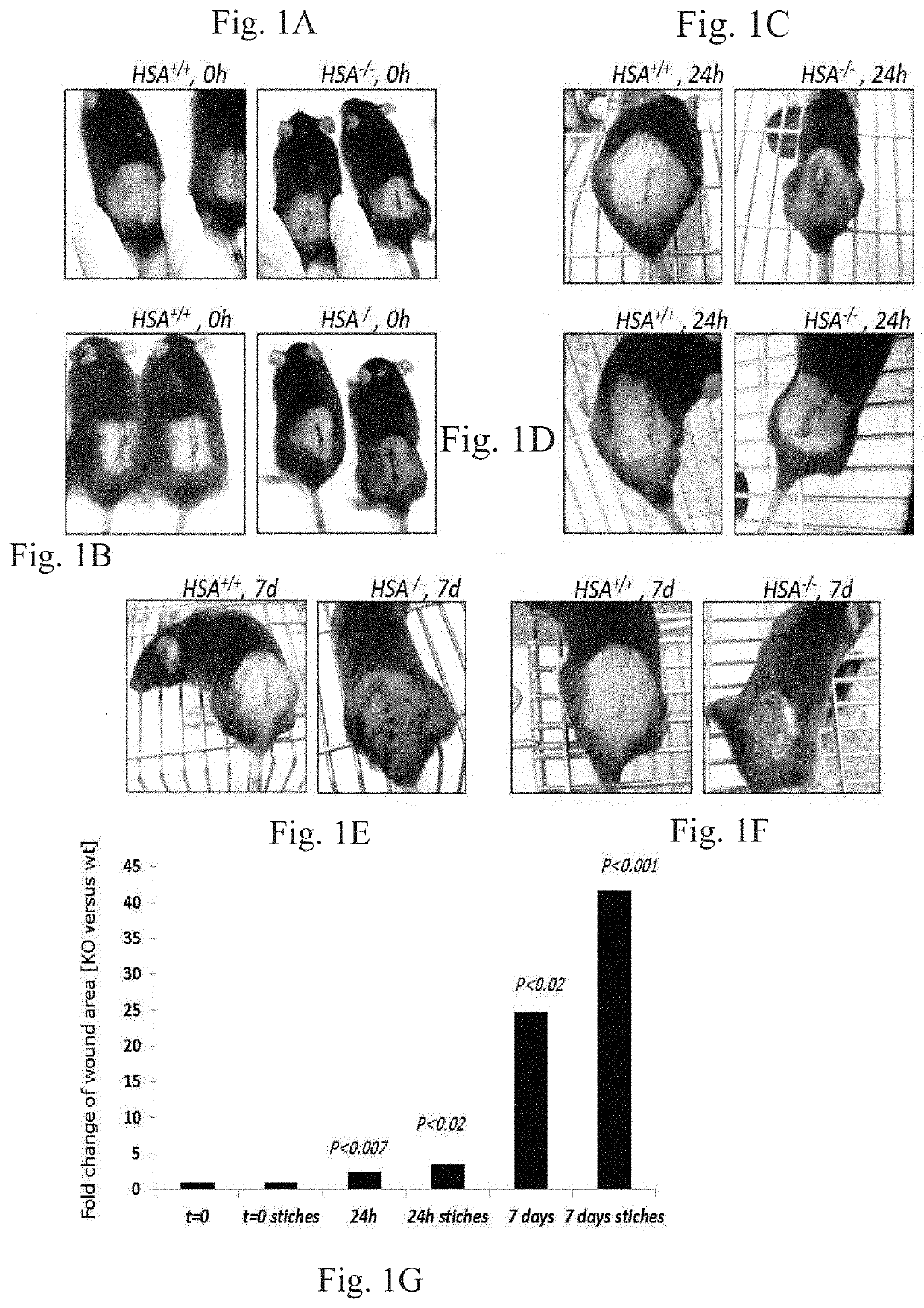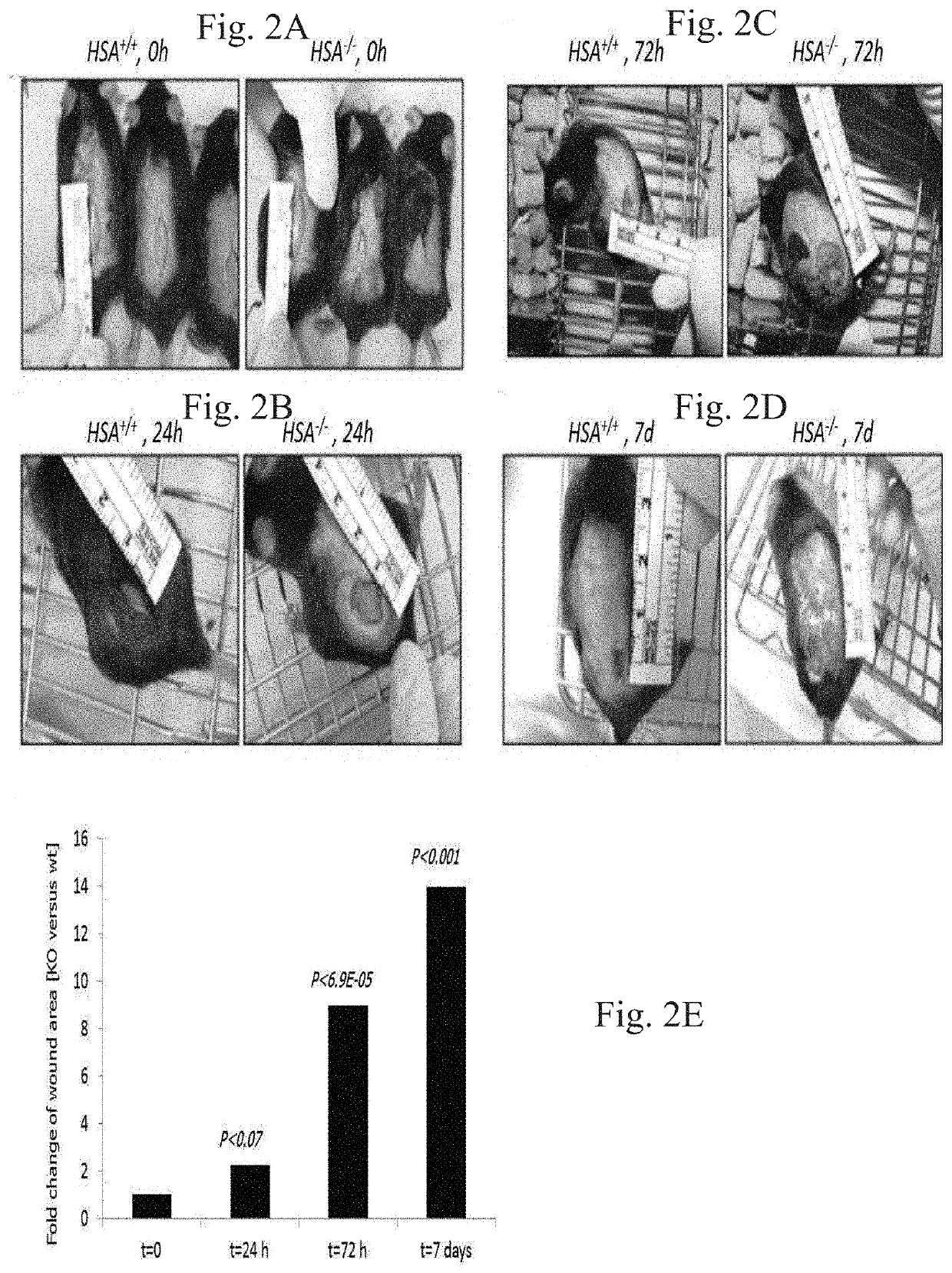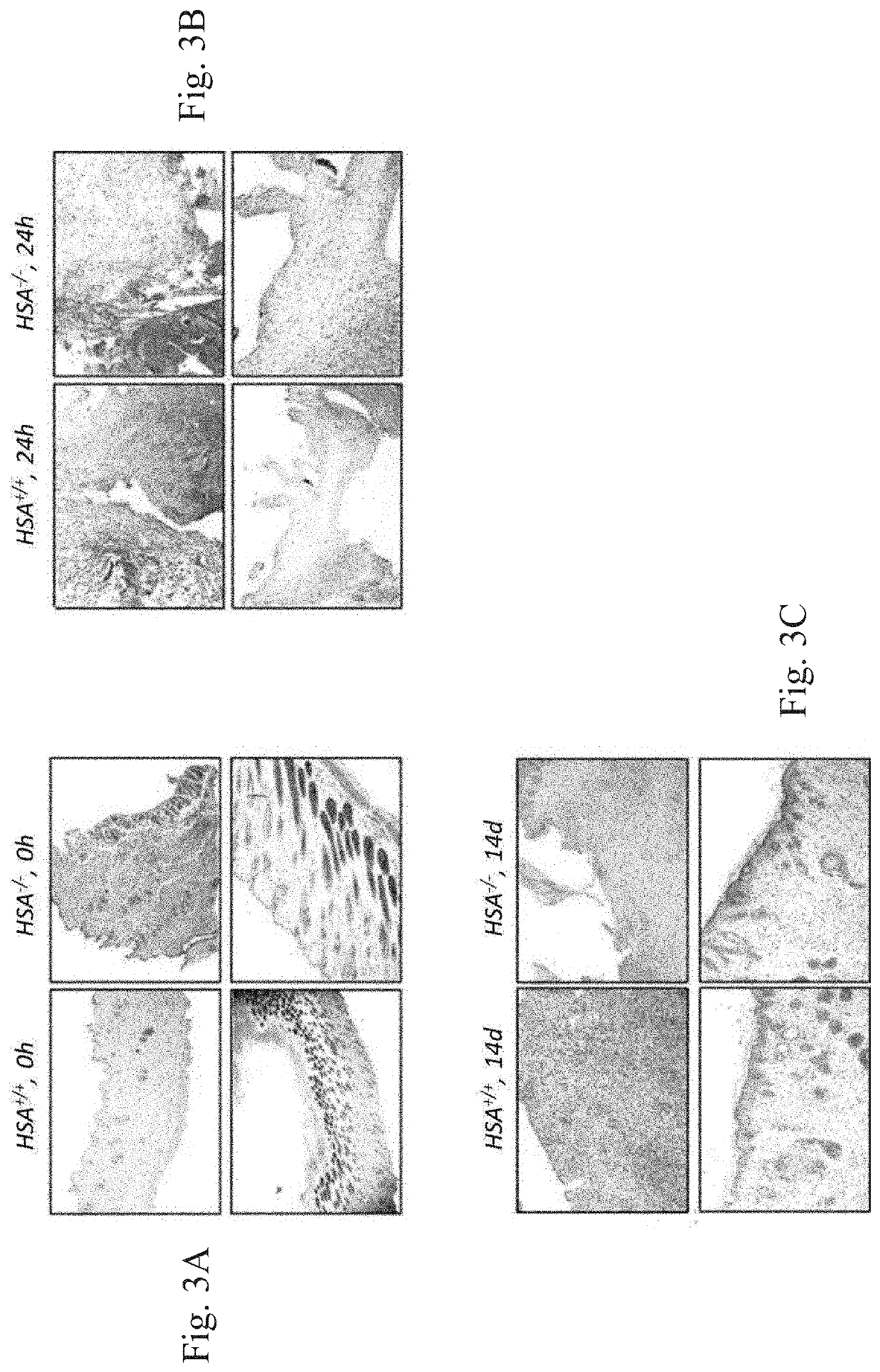Methods and pharmaceutical compositions for improving wound healing using CD24
a technology of pharmaceutical compositions and wound healing, applied in the direction of drug compositions, aerosol delivery, peptide/protein ingredients, etc., can solve the problems of difficult assessment of the contribution of each component to the wound repair process, inability to achieve esthetically or functionally perfect results, etc., to improve the wound healing and improve the effect of wound healing in the subj
- Summary
- Abstract
- Description
- Claims
- Application Information
AI Technical Summary
Benefits of technology
Problems solved by technology
Method used
Image
Examples
example 1
Delayed Wound Healing In HSA KO Mice
[0293]Experimental Results
[0294]Several independent experiments with 10-mm oblong full-thickness excision wounds, including the striated muscle layer, on the dorsal skin of WT (HSA+ / +) (n=5) and KO (HSA− / −) (n=5) mice demonstrated that the absence of HSA hampered the healing of skin wounds (FIG. 1A-G). Moreover, the KO mice failed to keep the stitches in the stitched wounds. Healing of KO mice wounds remained incomplete. In the HSA KO mice, scabs were thicker and erythematous wound fields were shown. Similar results were seen with longer excision wounds (n=6) (FIG. 2A-E).
[0295]Histologic scoring [Discordant effects of a soluble VEGF receptor on wound healing and angiogenesis, Gene Therapy (2004) 11, 302-309. doi:10.1038 / sj.gt.3302162] was based on the degree of cellular infiltration, granulation tissue formation, and re-epithelialization (Table 1 below). Wounds of WT mice had higher average histologic scores compared to the KO mice. There was a gr...
example 2
Production Of HSA-Encoding Viruses
[0299]Experimental Results
[0300]Three viral-based vectors were used to deliver and express the HSA gene in the wounded tissue. First, the expression of the transgene by the helper cells, in vitro, was confirmed by monitoring the mCherry fluorescence marker (FIG. 5A) and Western blot analysis (FIG. 5C). Next, the infectivity of the produced virions was tested in vitro on NIH-3T3 cells. Seventy two hours post-infection of NIH-3T3 cells, the expression of the HSA / mCherry proteins was examined and confirmed by fluorescence microscopy (FIG. 5B), Western blot (FIG. 5C) and FACS analysis (FIG. 5D).
example 3
Re-Expression of HSA Restored the Healing Phenotype
[0301]Experimental Results
[0302]Next, the present inventors examined whether the expression of HSA in HSA− / − mice restores the WT healing capabilities. Firstly, the present inventors verified that the viruses infected the cells in vivo. To that end, in vivo imaging of the wounded tissue in the WT mice 96 hours after virus injection / dropping confirmed the expression of mCherry and HSA in the wounded tissue (FIG. 6A-C).
[0303]Then the importance of HSA in the healing process was evaluated by an additional experiment that was performed as described in Table 3 below. Briefly, mice from each genotype were randomly divided into groups of three mice. Longitudinal incisions of 1.5 cm were made on their back and the HIV-encoding viruses (encoding mCherry SEQ ID NO: 47 or HSA SEQ ID NO:57) were administrated by injection into the cells on the wound border or by dropping of the viruses into the wounded area. The healing was monitored every day ...
PUM
| Property | Measurement | Unit |
|---|---|---|
| time | aaaaa | aaaaa |
| time | aaaaa | aaaaa |
| time | aaaaa | aaaaa |
Abstract
Description
Claims
Application Information
 Login to View More
Login to View More - R&D
- Intellectual Property
- Life Sciences
- Materials
- Tech Scout
- Unparalleled Data Quality
- Higher Quality Content
- 60% Fewer Hallucinations
Browse by: Latest US Patents, China's latest patents, Technical Efficacy Thesaurus, Application Domain, Technology Topic, Popular Technical Reports.
© 2025 PatSnap. All rights reserved.Legal|Privacy policy|Modern Slavery Act Transparency Statement|Sitemap|About US| Contact US: help@patsnap.com



